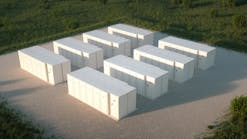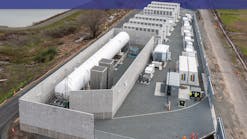Like Riding a Bicycle: Demand Fluctuation and Electricity Storage
This article is a follow-up to “A Faster Horse,” in which I briefly discussed the origin of investor-owned utilities. In that article, I referred to five characteristics of natural monopolies, and in this second of five follow-up articles, we take a brief look at one of those five characteristics and the impact of current technology developments on it. In this article, I focus on the general non-storability of electricity and the fluctuation of demand, and how historically this has influenced the development and operation of the industry.
Albert Einstein once said that life is like riding a bicycle: To keep your balance, you must keep moving. He never allowed for track stands in that statement. A track stand is a technique on a fixed gear bike where the rider rocks the pedals very slightly back and forward and remains upright in one place. There has been little to disrupt the non-storability of electricity until recently, but it does not take a lot of change to make a significant impact. We have been rocking backward and forward for a century, making small adjustments but staying in the same place. Now, the picture is changing.
Historically, the non-storability of a commodity like electricity has not always been a problem. If supply and demand are predictable and steady, or if they change only gradually, then just-in-time delivery is straightforward. But the storability of a commodity becomes increasingly important where the demand for it fluctuates, since this can provide a buffer against fluctuations in both supply, demand and also in the supply chain. Where demand and supply fluctuate and storage is not feasible, it creates conditions for a natural monopoly.
The combination of fluctuating demand and relative lack of storage is, therefore, one of the characteristics of a natural monopoly. This combination creates serious challenges, especially when the product in question moves at the speed of light, making electricity the ultimate challenge for a just-in-time supply chain. Forms of thermal storage have long existed but these are ways of storing energy, not electricity. The energy stored this way cannot be returned to the grid as electricity. It is simply energy that is stored. It has the impact of changing the time when the electricity is consumed, thus helping to balance supply and demand by taking actions in advance of anticipated imbalances. Likewise, we have had pumped storage for a long time. Pumped storage is not the most thermodynamically efficient system, but it is a good economic tool and can facilitate the use of excess or cheap power to help provide power when demand is high and, thus, typically more expensive. Unlike thermal storage, pumped storage and battery storage have the capability to return power to the grid. With battery storage, today we have both utility-scale and consumer-scale batteries, and the barriers to entry for storage are lower than they have ever been.
Since supply and demand must be balanced in real time, storage has a lot of value. It provides a buffer for generator or ensures load responses appropriate for changing grid conditions. With consumer-scale storage, it can be spread over large geographic areas, instead of being at concentrated or centralized locations. This provides for the capability to manage imbalances between supply and demand at the grid edge and for specific locations.
Demand fluctuations are already being used by many programs to match load to generation through direct load management and load curtailment programs. Grid modernization offers new and improved mechanisms to provide potentially wider access to more of these programs while also using supply and demand to coordinate their actions through techniques such as transactive energy systems.
The rapidly increasing uptake of transportation electrification is another game-changer. Electric vehicles increase demand while they are charging, thus creating options for different charge rates as well as a means to store electricity. The increasing deployment of electric vehicles will open up many opportunities (and create new challenges) in the areas of fluctuating demand and storability.
Since we have not only more potential demand fluctuation but also more storage, definitive conclusions as to the impact on natural monopoly characteristics are harder to come by. For the integration and coordination of storage, there will need to be monitoring and control/coordination systems developed that operate at lower voltages and closer to the grid edge than markets have ever existed before.
Has grid modernization eroded non-storability as a natural monopoly characteristic for utilities? I think the answer is definitely yes. But with the advent of electric transportation, it is not as strong a “yes” as it might once have been.


